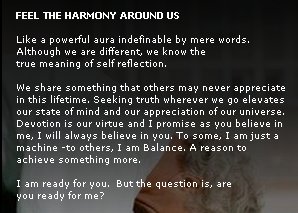No, Burger King (BK) does not have the monopoly on awful advertising. Not by a long shot. But this new commercial combines sexism, racism, and probably a whole lot of other -isms that my mind wants to blank out into one nasty little package. I just… yeah. Didn’t Carl’s Jr. try this one before? And Jack in the Box? And, like, didn’t it fail? Miserably?
Shame on me for trying to apply Earth Logic to Marketing! I should know better, really. But, in all seriousness, this commercial is just plain bad. I don’t mean to pick on Burger King (well, I sort of do), but it’s making the rounds on ther internet (elsewise I never would have seen it, me being in Japan and all), and I can’t help but put my two cents in. Two cents that should be studying my kanji, but, hey, I got all but the hardest combinations right when my study partner quizzed me. I deserve a break.
So, without further ado, let’s begin with the analysis.
I. Pandering to the Caveman Mentality
 Rarely have I seen such contempt shown for men as when they are portrayed as what I can only describe as “cavemen.” Uncivilized at heart, barely above animals (and, to be sure, in the minds of the person making the connections, animals are base creatures without intelligence), who have no real control over their actions. They’re men, after all!
Rarely have I seen such contempt shown for men as when they are portrayed as what I can only describe as “cavemen.” Uncivilized at heart, barely above animals (and, to be sure, in the minds of the person making the connections, animals are base creatures without intelligence), who have no real control over their actions. They’re men, after all!
The tagline, “I am Man, hear me roar!” (a dig at the feminist saying, as one feminist LJ commenter speculated?) sets the stage for the “caveman mentality”. Roaring, as we all know, is associated with lions (which also asserts men as “king of the jungle” — which, naturally, is to show that they are still supreme despite being closer to the animal kingdom than women). To further the lion analogy, the lines “‘Cause my stomach’s startin’ to growl, and I’m goin’ on the prowl,” show up.
Amidst all this prowling is two “manly men” punching each other in the stomach — male bonding, how quaint! And some guy ripping off his tighty whities and burning them. Given the “I am Man, hear me roar!” thing, I have to wonder if this is not another jab at feminism. The whole commercial is, after all, a backlash against the strains of feminist thought that say it’s okay (and — dare I say it? — good) not to succumb to the caveman mentality if you don’t want to.
And, really, we can’t forget the necessary “property destruction” part where they throw a guy’s van into a dump truck. For added bonus, the truck is being pulled by a man trying to get his “prize” — a whopper, of course! How manly! How virile! How… stereotyped. But, alas, you men just aren’t manly enough if you don’t buy into the caveman mentality.
II. Meat or Death!
 Later on I will discuss more in depth the role of “chick food” in the commercial, but here I would like to point out here that the entire premise of the commercial is based on conflating burgers with “MAN FOOD”. And, true to the Caveman Mentality, MAN FOOD (yes, it must always be in all caps) is meat. Red. Juicy. Meat. Mmm, manly. Of course, if one actually thinks about it, the BK whopper is a far cry from a steak which, in itself, is a far cry from what animals, or even our esteemed ancestors, ate. But, well, I’ve already established that logic has no place in commercials; it’s all about creating an emotional connection between your viewer and the product you want to sell.
Later on I will discuss more in depth the role of “chick food” in the commercial, but here I would like to point out here that the entire premise of the commercial is based on conflating burgers with “MAN FOOD”. And, true to the Caveman Mentality, MAN FOOD (yes, it must always be in all caps) is meat. Red. Juicy. Meat. Mmm, manly. Of course, if one actually thinks about it, the BK whopper is a far cry from a steak which, in itself, is a far cry from what animals, or even our esteemed ancestors, ate. But, well, I’ve already established that logic has no place in commercials; it’s all about creating an emotional connection between your viewer and the product you want to sell.
So, back to the whole MAN FOOD thing. In order to set this up, the BK marketing team has chosen to go with an effective tactic: the dichotomy. People love simplicity, and what’s more simple than an “Us vs. Them” mentality? In this case, several dichotomies are set up. I’ll talk about the “chick food”/”dick food” dichotomy in the section on women in the commercial, but here I’d like to talk about the unseen dichotomy: carnivores versus vegetarians.
I am no expert on any form of vegetarianism (but perhaps Ariel will weigh in with her opinions on the matter?). I love meat. I love it so much that I’ve jokingly said on several occassions that I was a carnivore. However, this isn’t just pushing meat as a healthy part of a non-veg*n (catch all phrase for the multiple kinds of vegetarianism) lifestyle. It’s pushing it to the exclusion of foods associated with health, namely salads and tofu (they mention quiche, too, but I don’t know how healthy/not healthy it is supposed to be).
Seeing as men already have a tenuous relationship with their own health, I see this as a problem. A big problem. While I may find networks “for men” like Spike questionable in many areas (as I find their female counterparts, like Lifetime), one thing I noticed while getting my Star Trek fix is that the station will often emphasise the fact that men should take care of their health. They challenge the stereotype that it’s “unmanly” to take care of one’s health, often by advocating the benefits of a healthy lifestyle. I have always thought that this was a good thing — men deserve to not be shamed into leading harmful lifestyles.
What BK does with this commercial, however, is chip away at the progress that stations such as Spike have made. They quite obviously draw the line between “healthy” food (tofu, especially, is the poster child for “healthy food”) and MAN FOOD, namely BK’s burgers. And, you know what, I don’t think that’s cool. As someone who loves burgers, I don’t like one of my favourite foods being used to shame men into thinking that if they aren’t “carnivores” then they are less manly. I, frankly, see it as BK emasculating men who don’t want to buy their product. And, really, if anyone is going to be emasculating men around here it should be us feminists. I’m kidding! Jeez, y’all can’t take a joke. What are you, a bunch of humourless feminists? Ha, ha. But I’m serious about the BK thing. And that’s not cool.
III. The Sexualization of Meat
 Meat already is tied to sexuality in our culture. Phrases like, “beating the/your/my meat,” are euphemisms for male masturbation. “Man meat” referrs to a phallus. Do I even need to go into all the sausage and hot dog references? Bottom line: meat is, in most Westerner’s minds, linked to sexuality, especially male sexuality.
Meat already is tied to sexuality in our culture. Phrases like, “beating the/your/my meat,” are euphemisms for male masturbation. “Man meat” referrs to a phallus. Do I even need to go into all the sausage and hot dog references? Bottom line: meat is, in most Westerner’s minds, linked to sexuality, especially male sexuality.
Earlier I referenced a line in the jingle about “going on the prowl.” In the animal kingdom, this means hunting for food. For humans, however, it often means hunting for sex — most often used to describe men seeking out women. Already, here, burgers are linked with sex and conquest. Which puts burgers on the same level of women. Or, I suppose I should say, women on the same level as burgers. It’s not an overt objectification (that comes a bit later), but it is, I would argue, an objectification of women.
At another point, the lyrics go, “I will eat this meat,” and a large banner unfurls that says, “Eat this meat,” which has another one next to it saying, “I am man.” Now, dirty minded that I am, the first thing i thought of was some homoerotic action. Which, given the context of the commercial, I doubt BK would imply. Only heterosexual men deserve to eat whoppers, after all (must… resist… writing… on caveman mentality and heterosexism……). But, the first three times through, every time I saw that sign, it looked sexual to me. Now that I have to stop and analyse it, I’m sort of at a loss. Do any of y’all have thoughts on the matter?
IV. Happy Asian American Heritage Month!
 Oh, yes, they went there. I find it subtly ironic that this little section appears in the commercial during Asian American Heritage Month (which, if I’m a good person, I’ll blog about before the end of the month). For those of you who missed it, I highly recommend watching A Chink in the Armour, which addresses (among other things) the false notion that “every Asian knows kung fu.”
Oh, yes, they went there. I find it subtly ironic that this little section appears in the commercial during Asian American Heritage Month (which, if I’m a good person, I’ll blog about before the end of the month). For those of you who missed it, I highly recommend watching A Chink in the Armour, which addresses (among other things) the false notion that “every Asian knows kung fu.”
But, I mean, come on, the only visible Asian American in the entire crowd and BK has to do that? And I noticed that he’s the only prominent suit wearer. There were only two others I could find — one (white looking) guy in the lineup who bare their manly arm muscles while bringing the burger to their mouthes (maybe I should have mentioned that in the caveman section?), and the other was a black man in what looks to me like a white leisure suit. Forgive me if the terminology is wrong.
I guess, if one was a fan of using stereotypes to fight stereotypes, you could see it as the AAM (Asian American Man) asserting his virility. He can be part of the caveman mob mentality, too! But maybe just him, as there didn’t seem to be any other Asians around. Of course, if one was more cynical like me, you could see it as reinforcing the asexual kung fu master stereotype without gainfully challenging any other stereotype associated with Asians. And since I am cynical like myself, I’m going with the latter interpretation.
V. What about the women?
 The commercial is, unsurprisingly, devoid of women. It’s about men, after all. However, it does make the few women present stand out. The first of whom is the assumed girlfriend of our protagonist. The implication is that she forced her carnivore boyfriend into eating at a fancy restaurant — excuse me, a women’s restaurant, which serves chick food. Although why they would serve chickens the kind of food displayed in the commercial is beyond me. I joke, I joke.
The commercial is, unsurprisingly, devoid of women. It’s about men, after all. However, it does make the few women present stand out. The first of whom is the assumed girlfriend of our protagonist. The implication is that she forced her carnivore boyfriend into eating at a fancy restaurant — excuse me, a women’s restaurant, which serves chick food. Although why they would serve chickens the kind of food displayed in the commercial is beyond me. I joke, I joke.
Seriously, though, Luke of Real Men Are Not (RMAN) comments on the potential harms of using the “chick food”/”dick food” dichotomy:
I really get tired of the old “men are carnivores†thing because on the flip-side it tells women to eat….guess what, SALADS. We know now, of course, that for reasons of anemia and what not, women and young girls should actually be eating more red meat but no, that’s not what the King with that chesire cat grin on his face would have you believe.
On the livejournal forums, other discussions on the implications of the “chick food” (salads, quiche, tofu… “rabbit food” as one commenter describes it) can be found here, here, and here (snark at the fact that BK used to offer vegetarian hamburgers).
The other woman, like the first, is only seen for a split second. She is the keeper of the prize — the hamburger. Much like the women at racing shows, E3’s booth babes, and other “acceptable” female jobs in male-dominated fields, I believe that this woman’s main appeal is to show off the hamburger. I must say, however, I am a bit stumped as to why they chose the woman (who does not fit the standards of beauty that I have seen levied on others of her profession type), or the outfit (which, to me, makes her seem more asexual than sexual). Is it to not detract from the focus — that of the burger? Is it that she is the kind of real woman seen in the kinds of events that the man is mimicing? Am I missing something important?
While not unexpected at all, the use of the two women in this commercial bothers me. I would much rather not have any women at all — and, seeing as the commercial specifically targets men, I don’t see why they strictly need to be there — rather than used to first set men apart (and above) and then being nothing more than decoration for the product that BK is selling. But, I suppose it is a relatively minor point when compared to the gross abuses of masculinities that BK has used throughout the commercial (thank you gender caste and gender cultism!).
VI. Conclusion
“I am a man”? All I have to say, BK, is if this is what you think men are, then you and your crack marketing team hate men a lot more than I ever could. I mean, at least I’m not out to kill them, which is more than I can say for this ad campaign.
Seriously, for all the men who read this blog, are you not insulted by this? Like, honestly? And if not, then why the hell not? Y’all are better than all this bullshit, and I know that for a fact.
Via RMAN.


 Okay, so a while ago onebrownwoman has this
Okay, so a while ago onebrownwoman has this  Rarely have I seen such contempt shown for men as when they are portrayed as what I can only describe as “cavemen.” Uncivilized at heart, barely above animals (and, to be sure, in the minds of the person making the connections, animals are base creatures without intelligence), who have no real control over their actions. They’re men, after all!
Rarely have I seen such contempt shown for men as when they are portrayed as what I can only describe as “cavemen.” Uncivilized at heart, barely above animals (and, to be sure, in the minds of the person making the connections, animals are base creatures without intelligence), who have no real control over their actions. They’re men, after all! Later on I will discuss more in depth the role of “chick food” in the commercial, but here I would like to point out here that the entire premise of the commercial is based on conflating burgers with “MAN FOOD”. And, true to the Caveman Mentality, MAN FOOD (yes, it must always be in all caps) is meat. Red. Juicy. Meat. Mmm, manly. Of course, if one actually thinks about it, the BK whopper is a far cry from a steak which, in itself, is a far cry from what animals, or even our esteemed ancestors, ate. But, well, I’ve already established that logic has no place in commercials; it’s all about creating an emotional connection between your viewer and the product you want to sell.
Later on I will discuss more in depth the role of “chick food” in the commercial, but here I would like to point out here that the entire premise of the commercial is based on conflating burgers with “MAN FOOD”. And, true to the Caveman Mentality, MAN FOOD (yes, it must always be in all caps) is meat. Red. Juicy. Meat. Mmm, manly. Of course, if one actually thinks about it, the BK whopper is a far cry from a steak which, in itself, is a far cry from what animals, or even our esteemed ancestors, ate. But, well, I’ve already established that logic has no place in commercials; it’s all about creating an emotional connection between your viewer and the product you want to sell. Meat already is tied to sexuality in our culture. Phrases like, “beating the/your/my meat,” are euphemisms for male masturbation. “Man meat” referrs to a phallus. Do I even need to go into all the sausage and hot dog references? Bottom line: meat is, in most Westerner’s minds, linked to sexuality, especially male sexuality.
Meat already is tied to sexuality in our culture. Phrases like, “beating the/your/my meat,” are euphemisms for male masturbation. “Man meat” referrs to a phallus. Do I even need to go into all the sausage and hot dog references? Bottom line: meat is, in most Westerner’s minds, linked to sexuality, especially male sexuality. Oh, yes, they went there. I find it subtly ironic that this little section appears in the commercial during
Oh, yes, they went there. I find it subtly ironic that this little section appears in the commercial during  The commercial is, unsurprisingly, devoid of women. It’s about men, after all. However, it does make the few women present stand out. The first of whom is the assumed girlfriend of our protagonist. The implication is that she forced her carnivore boyfriend into eating at a fancy restaurant — excuse me, a women’s restaurant, which serves chick food. Although why they would serve chickens the kind of food displayed in the commercial is beyond me. I joke, I joke.
The commercial is, unsurprisingly, devoid of women. It’s about men, after all. However, it does make the few women present stand out. The first of whom is the assumed girlfriend of our protagonist. The implication is that she forced her carnivore boyfriend into eating at a fancy restaurant — excuse me, a women’s restaurant, which serves chick food. Although why they would serve chickens the kind of food displayed in the commercial is beyond me. I joke, I joke.